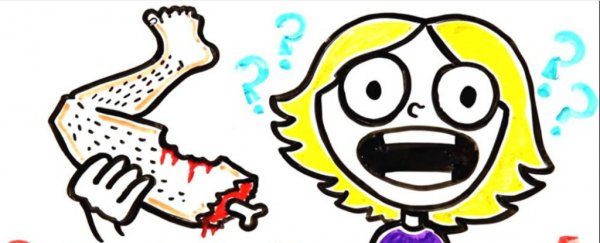We all heard about the disgusting toe in a cocktail drink last week – but what if all you ate was human flesh?
Apart from the moral issues, and weird legalities of the whole thing, would it actually be dangerous for you? What happens when a human actually eats another human?
The boys from AsapSCIENCE have all the (kinda gross) answers in their new video.
Let's start small - when we're looking at insect versions of cannibalism, it actually happens way more than you'd think.
For example Crab Spiders will lay unfertilised eggs for her babies to consume, and once they're done, the main course is literally herself – a process called matriphagy.
Fish, snails and amphibians are also not so worried about eating their own brethren if it means they get a good meal.
Mammals aren't quite as… invested in the cannibalism process, but that's not to say it doesn't happen.
For example, rabbits will eat their young in stressful situations, and ancient humans might have done a similar thing. Scientists have found evidence on ancient bones of other humans eating tongues, brain, marrow and thigh.
As the video explains, even in the 20th century Europe you could find human blood on the shelf – although doctors were using it as a remedy instead of a tasty drink.
But there are definite risks if you're thinking of turning into the next Hannibal Lecter.
Humans have a lot of viruses and bacteria just generally – and preparing and then eating a dead body could pass on hepatitis, Ebola, E. coli, or a bunch of other nasty diseases.
If you avoid all that – humans are a pretty calorie-dense meal – a human thigh alone would offer up around 10,000 calories.
A human heart would offer you 700 calories just by itself, but we do have a lot of fatty tissue, which might not be the tastiest.
But there is one more thing to worry about if you're going to start eating other humans – prions.
We'll let the video above explain that for you – but let's just say it definitely puts that toe cocktail in a whole different light.
